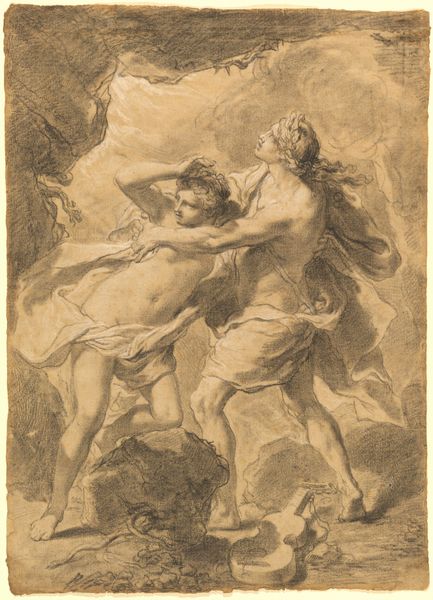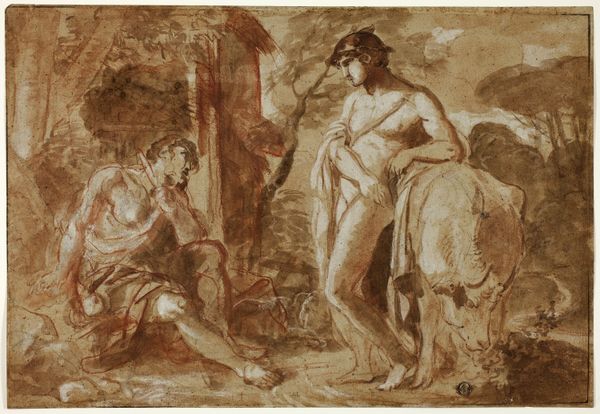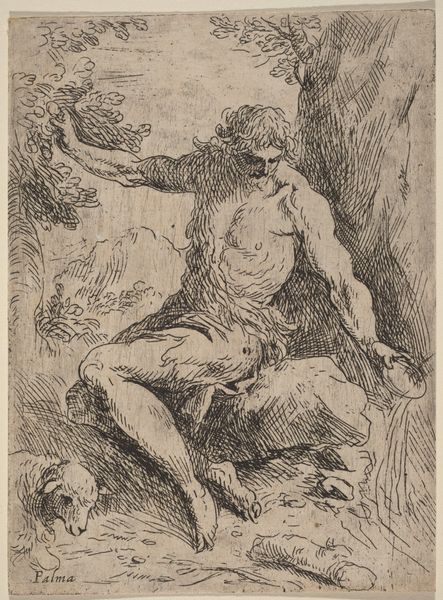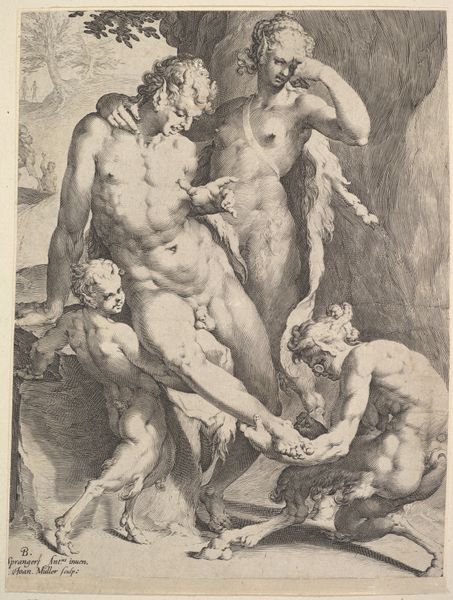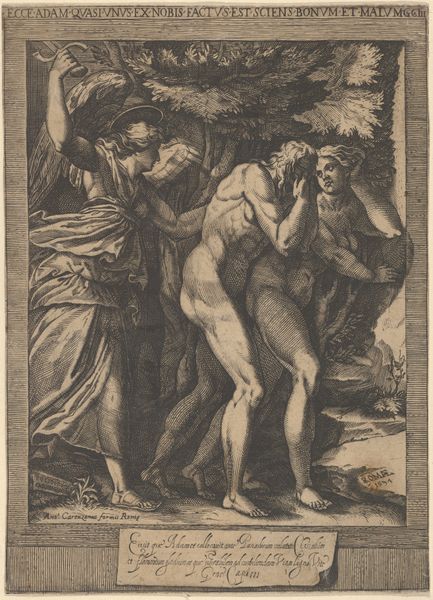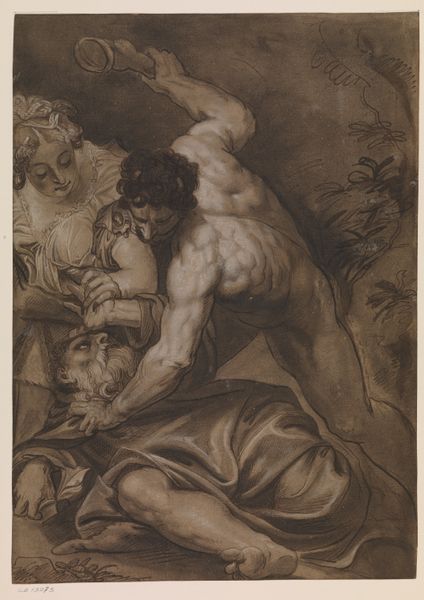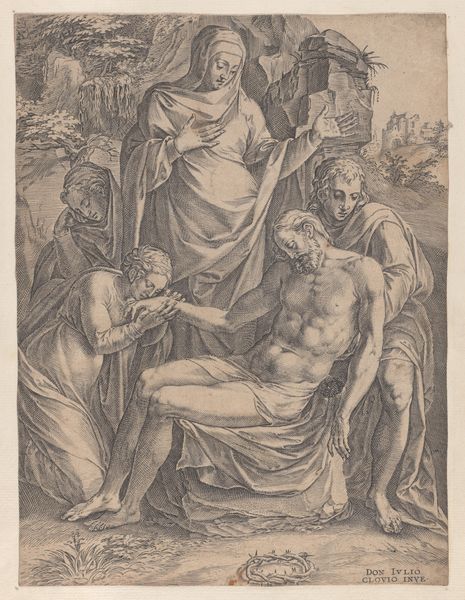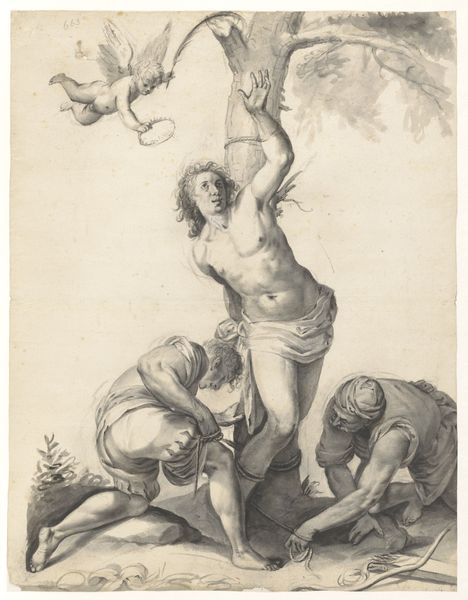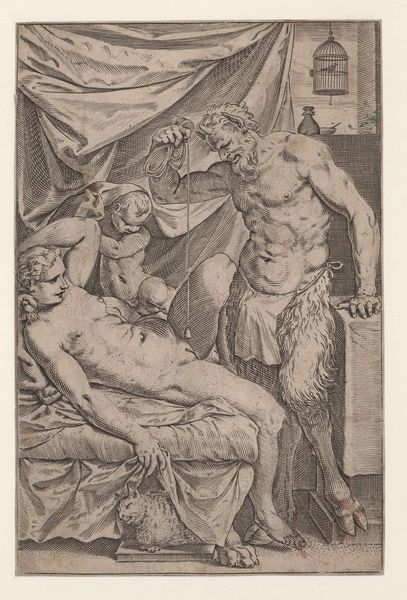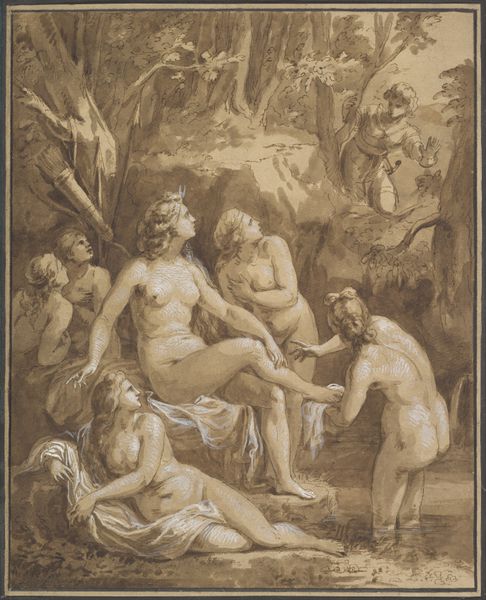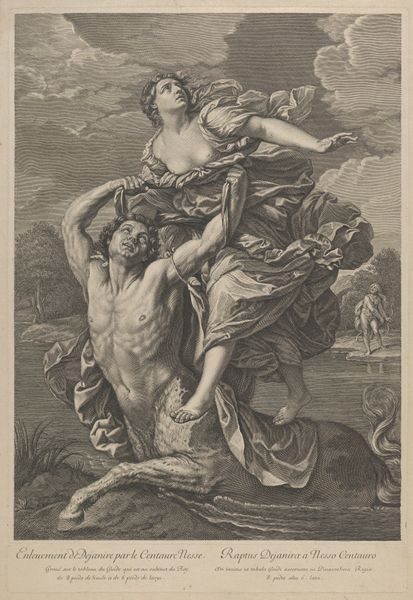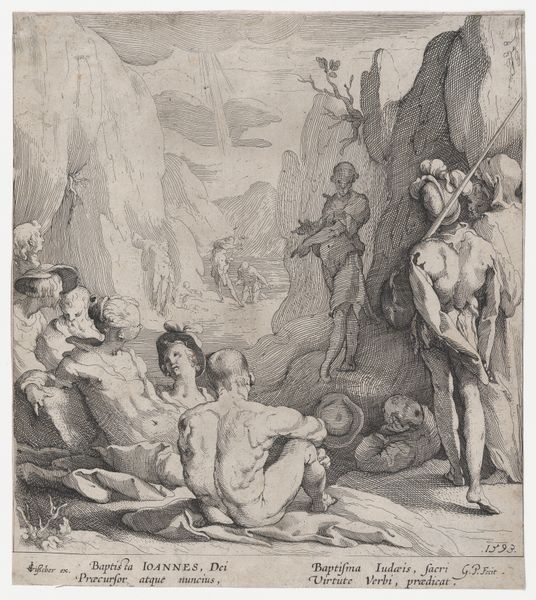
drawing, red-chalk, ink, indian-ink
#
drawing
#
netherlandish
#
toned paper
#
allegory
#
baroque
#
red-chalk
#
oil painting
#
ink
#
underpainting
#
indian-ink
#
15_18th-century
#
watercolour illustration
#
history-painting
#
nude
#
watercolor
Copyright: Public Domain
Editor: This is Jacob de Wit’s “Jupiter and Mnemosyne,” created around 1720, using red chalk, ink, and watercolour. There's a distinct warmth to the tones, and it feels almost dreamlike. What do you see when you look at this piece? Curator: A fever dream perhaps! De Wit truly captures the electric tension between a god in disguise and the goddess of memory. I sense Jupiter trying to make an impression here, but is Mnemosyne really all that impressed? Notice how De Wit uses the eagle, Jupiter's avian avatar, almost as a stage prop – as if even divine intervention needs a little *oomph* to seal the deal. What does the subdued palette tell you about De Wit's storytelling? Editor: Well, the tones make me feel like I am looking at a memory itself... Curator: Precisely! The muted palette lends itself well to the dreamy and ethereal quality befitting the goddess of memory. I also see a raw humanity in it; even gods in disguise go through the motions and vulnerability of ordinary men courting women! But then again... Maybe this whole tableau exists solely in Mnemosyne's recollection, shaped and filtered through the lens of time? Editor: I hadn't thought about that – memory as an active agent in shaping what actually occurred! Curator: Memory plays tricks on us! Is this how it actually happened, or is this Mnemosyne's carefully curated highlight reel? Perhaps it doesn't matter – what resonates is De Wit’s capture of intimacy tinged with power dynamics, immortalised in ochre and umber. And that’s a rather potent thought to carry as we move on, don't you think? Editor: Absolutely, this makes me see how past and present are linked in more ways than one.
Comments
No comments
Be the first to comment and join the conversation on the ultimate creative platform.
